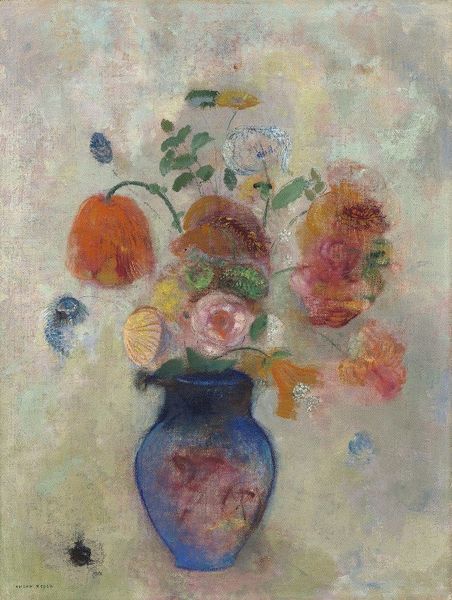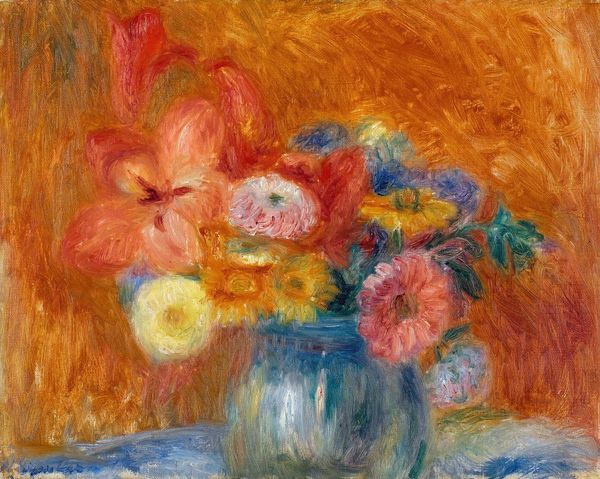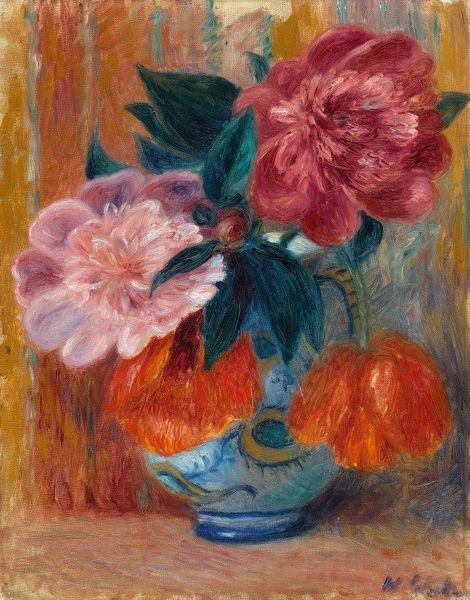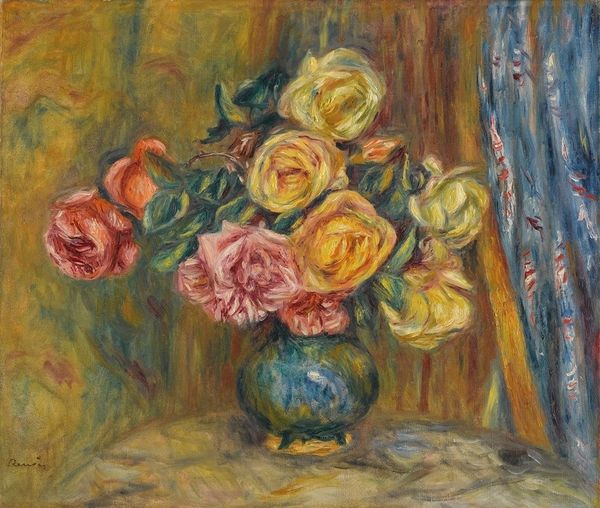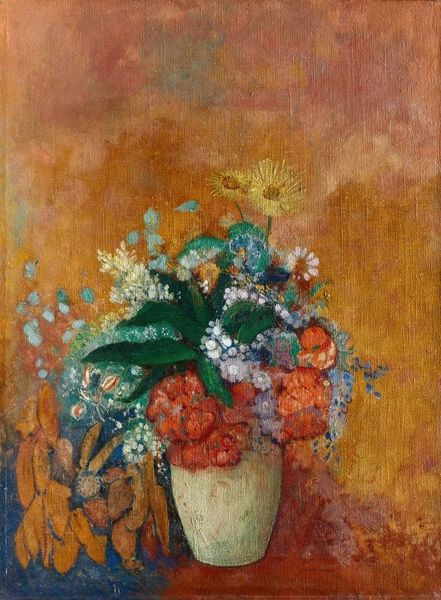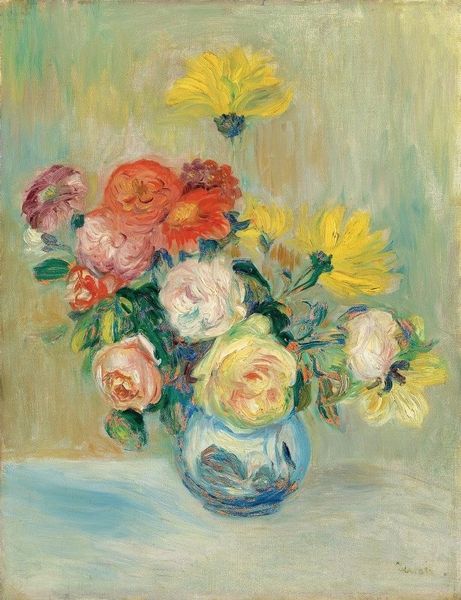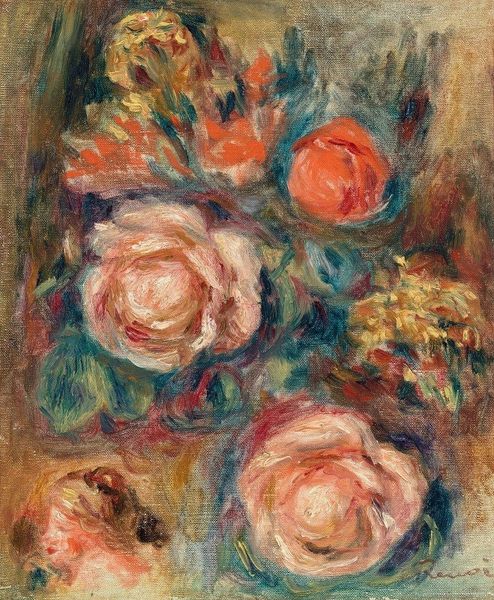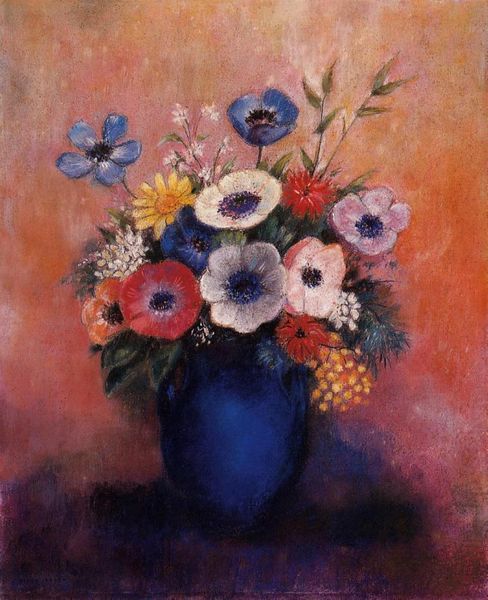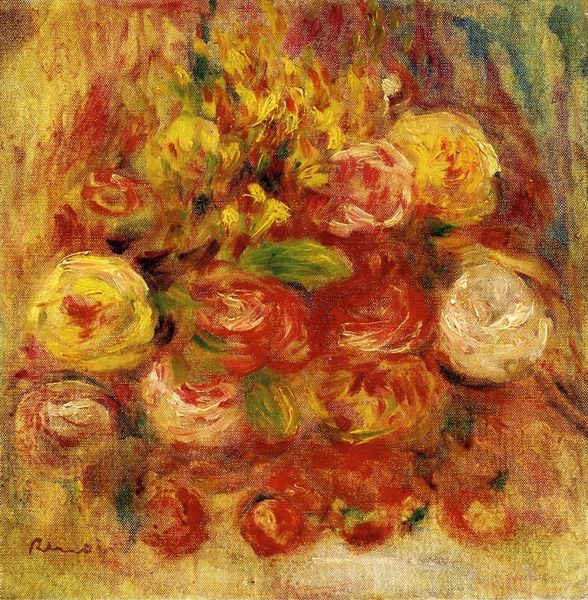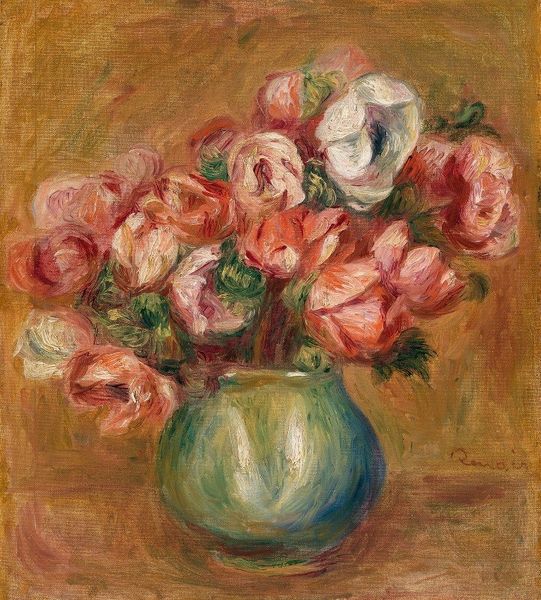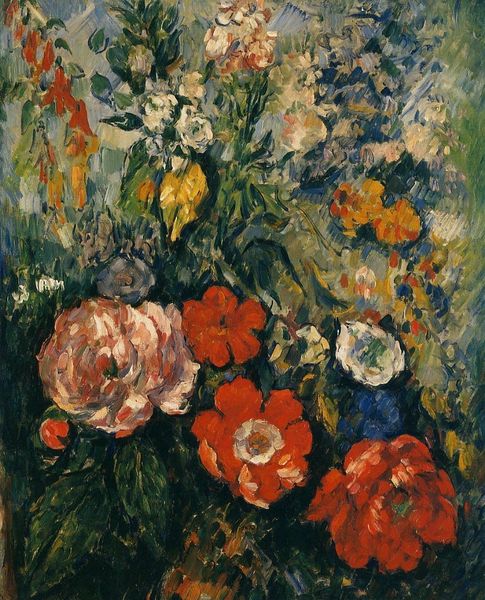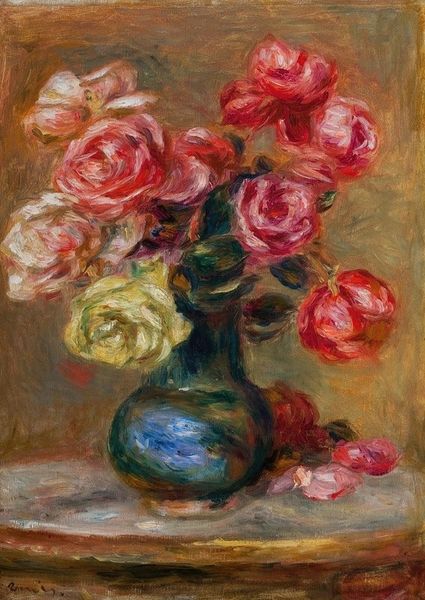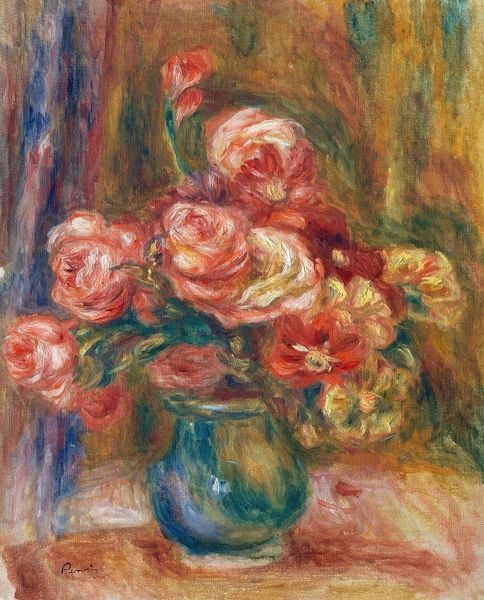
painting, oil-paint
#
painting
#
impressionism
#
oil-paint
#
oil painting
#
modernism
Copyright: Public Domain: Artvee
Art Historian: Here we have William James Glackens's oil painting, “Bouquet with Poppy.” Glackens, as some may know, belonged to the Ashcan School, which often depicted everyday life in New York City. It’s interesting to see him diverge into such a different subject here. Curator: Yes, my initial impression is definitely… not Ashcan. The explosion of vibrant colors is almost dizzying. The brushstrokes are so loose, verging on chaotic, yet there's still a recognizable bouquet taking shape. I’m curious to see why Glackens would choose flowers after documenting social issues. Is it just about beauty or there are more underlying references? Art Historian: It may well be the traditional association of flowers with mortality, Activist, as fleeting beauty captured in pigment. But Glackens also, intentionally or otherwise, employs familiar symbols here. Take the poppy for example – often associated with sleep, peace, and death but also remembrance. The arrangement as a whole also feels carefully curated. It reminds me of those classical still-life paintings laden with symbolism, almost like a vanitas in modern form. Curator: It makes me question who got access to this 'beauty', given the gritty realities many were facing at the time. Floral paintings often appeared as luxury objects, right? So maybe here we’re looking at questions around consumerism, who buys the painting? Why is the flower beauty a subject to represent through visual art in the early XX century? Art Historian: Interesting point. Thinking symbolically, these bright blossoms—painted during a time of significant social upheaval and change—could actually function as an image of hope or respite from the more difficult realities. Curator: That’s insightful, I agree. What I like here is that he presents, like you were saying, this sort of respite or visual pleasure, without losing the expressivity on the composition. Maybe his intention was not about idealizing wealth, but recognizing it within the painting practices during his time. Art Historian: Ultimately, seeing the poppies, roses, daisies altogether may evoke mixed readings, the visual combination generates a deeper contemplation. There is more going on behind beauty's mask. Curator: Definitely, It gives another perspective about Glackens beyond Ashcan. Thank you, Iconographer. Art Historian: And thank you for drawing me into that interpretation. Always a pleasure, Activist.
Comments
No comments
Be the first to comment and join the conversation on the ultimate creative platform.
